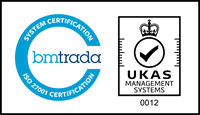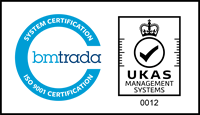Posted on: Wednesday April 14, 2021

Chances are the HR system you use to administer your employee benefits package comes with streams of usage data. The average Human Resources team is sitting on a data gold mine: data which can be used to improve decisions, make employees happier and optimise processes.
Imagine the value data like this can add to a company. In theory, you can find out once and for all what employees value and which benefits are worth the investment. The challenge is how to leverage this insight to enable effective, validated decision making.
Daily data
We are empowered by how technology enables us to access our own data. Think of activity trackers like Fitbit, where we can view and make informed decisions based on the data which is being reported back to us.
As an individual, we can use this data to improve aspects of our lives and potentially drive or change behaviour. For example, if we wanted to get fitter and increase our daily mileage, we could use our step count data to drive behaviours which would help reach the objective i.e. increase steps per day.
It should come as no surprise that the importance and versatility of personal data are continually being developed both for commercial purposes and in organisations, particularly for HR and people functions.
Previously, HR decisions could be perceived to be based on gut feel and not on solid research and analytics. However, HR are now much more sophisticated in capturing and analysing data, which helps us continually adjust our employee offer to deliver maximum value and attract the best quality employees.
Here are four ways to measure how employees see your reward and recognition package:
1. Demographics
By collecting data regarding the demographics of your organisation, you can determine a baseline breakdown of your organisation’s makeup. In turn, this will help you deliver the most relevant benefits to each group. For example, younger members of the workforce may prefer schemes to help get them on the property ladder, whilst more mature staff members may be balancing the demands of taking care of and protecting their family, whilst trying to have one eye on saving for the future.
2. Analytics
By using analytics to see what’s meaningful to employees (either via measuring uptake of benefits via your employee experience portal’s management system, or by using methods such as surveys), and tailoring your benefits offer to fit the needs of your workforce, you can ensure that relevance is at the forefront of the reward agenda. Remember the importance of getting employees’ views, since the analytics won’t show you if something is missing or tell you why a benefit isn’t being used.
3. Compare to Averages
Keeping abreast of the trends both nationwide and in your sector will help give an indication as to how your offer stacks up next to the competition. Furthermore, by understanding what other businesses are doing, particularly businesses that are doing reward and benefits well, you can find new ways to progress your strategy.
4. Consider Wellbeing
Measuring ROI for wellbeing benefits is trickier as their impact is often broader than simply reducing absence figures, turnover etc. Our sister company Innecto have been developing thoughts on Hapi.ness levers, looking at measuring how well we as organisations manage financial, physical, social and mental aspects of wellbeing to establish an overall wellbeing benchmark for the business.
To realise its full value, wellbeing requires a truly holistic approach, one that focuses on each of these levers and doesn’t just ‘provide a benefit’, but monitors, reviews and ensures a return on investment financially whilst extending the employee lifetime value too. Whilst we should support and measure the wellbeing of the individual, it is intrinsically linked with measuring and understanding the wellbeing of the organisation in its entirety.
In summary, HR teams should look to develop their reward and benefits packages using analytics to inform their approach. Being smarter about the kind of data we collect and use will allow us to deliver best-in-class programmes that are constantly evolving based on the needs of employees.
Personal Group are experts in employee engagement. Find out how we can help your organisation by emailing [email protected] or call us on 01908 605000.
Student loans – how to support workers repaying the cost of university
It’s the summer of 2025 and thousands of new university graduates are hitting the employment market, armed with youthful enthusiasm and a will to work. But the majority will also be saddled with debt. To gain an insight into this challenge, we spoke with two of our experts at opposite ends of the generational divide: reward consultant Spencer Hughes graduated from Swansea University in 2018 and Business Development Director Andrew Walker studied at Aston University before student loans were introduced. We asked them how companies, and HR in particular, can help these younger workers?
Posted on: 6 August 2025
How to use tech to personalise reward and benefits to better support parents and carers
July marks Good Care Month, an annual campaign to celebrate the contribution of carers working in the social care sector, and highlight the profile of care as a rewarding and essential career path, particularly at a time when recruitment and retention in the sector are national priorities. Personal Group’s Andrew Walker looks at how the clever use of HR Tech can help this silent army.
Posted on: 24 July 2025 by Andrew Walker, New Business Development Director
Rethink Employee Benefits Before Your Workforce Walks
The construction industry is in the middle of a people crisis. Skilled construction workers are hard to find, and even harder to keep. HR and site leaders are under pressure to deliver more with less, across multiple sites and roles, supporting a workforce that’s often offline and on the move.
Posted on: 17 July 2025 by James Solomon, New Business Development Director






